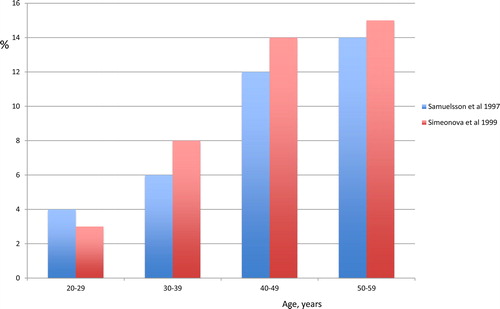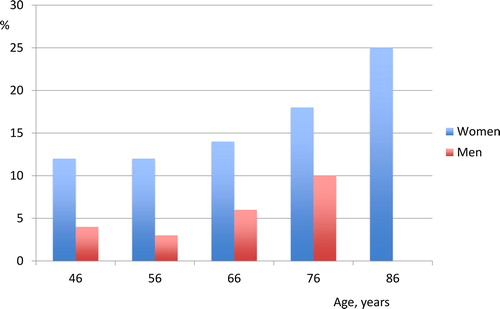Figures & data
Table 1. Population-based prevalence rates for female urinary incontinence (UI) in studies sampling more than one country.
Table 2. Risk factors for urinary incontinence.
Table 3. Estimated number of individuals with urinary incontinence by year and sex.
Table 4. Global estimates of individuals with urinary incontinence grouped by year and region.


